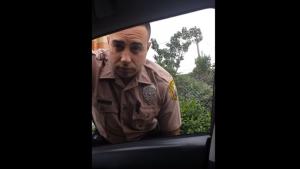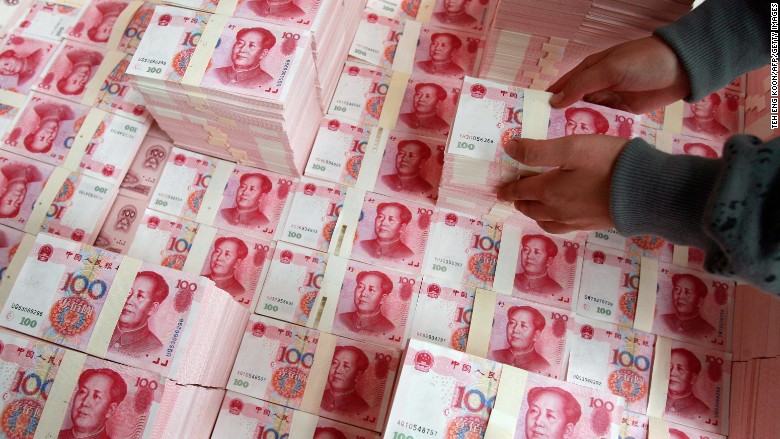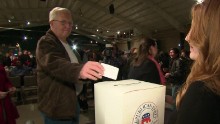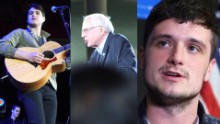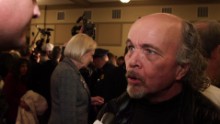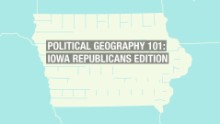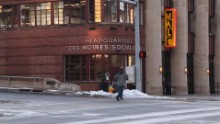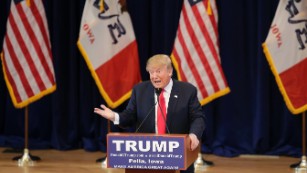Iowa voters on Monday at last cast their verdicts on the Democratic and Republican presidential fields in the state's intricate and quirky caucuses, officially launching the 2016 White House race.
But along with Iowa's first-in-the-nation privileges come responsibility. After all, the state's discerning political activists can make or break campaigns painstakingly pieced together over years in a single night.
So it's fitting that the caucuses -- caucuses, plural, not singular caucus -- impose some unusual burdens on voters. In the Iowa caucuses, unlike primaries countrywide, you can't just get away with pulling a lever in a curtained polling booth at any time of the day that's convenient.
Instead, hardy Iowans must attend public meetings in school gyms, arts centers, churches, libraries, restaurants and even fire stations in 1,681 precincts to vote for a candidate. The process is much longer -- it can take several hours -- and more convoluted than a primary ballot. So we've provided a guide to understanding how the Iowa voting ritual works.
When does it all start?
Caucus meetings for Iowa Democrats and Republicans begin at 7 p.m. Central Time, or 8 p.m. for the East Coast. Anyone who shows up on time can take part. But don't be late. Once the doors close, there is no entry for stragglers.
Do Democrats and Republicans run their caucuses the same way?
No.
So how do the GOP caucuses work?
The GOP process is the simpler one.
Caucus meetings begin with the Pledge of Allegiance and then activists get straight to the main event -- selecting their presidential candidates in a binding vote.
Each campaign gets the chance to have a representative make a final pitch to any wavering voters before a secret ballot. Some caucus sites might use a printed ballot paper. Others just go with a candidate's name on a scrap of paper.
Raw totals of votes are tallied by local party officials and sent to Iowa GOP headquarters, where a running count is kept.
And the Democratic ones?
The Democratic caucus system is a little more intricate.
As soon as the meetings open, attendees must declare a preference for a candidate.
Typically, backers of each presidential hopeful physically stake out positions around the room. People who still can't make up their mind join a group known as "uncommitted."
This is where it gets complicated. In order to be considered "viable," a group must clear a certain threshold -- usually around 15% of the entire caucus turnout in each precinct.
Once first-round votes are tallied, anyone stuck in a group that is not "viable" has the chance to align with a candidate who has passed the threshold.
This year it's likely that supporters of Martin O' Malley, scraping along at low single-digits in the polls, will struggle at many caucus meetings to form a "viable" coalition.
The former Maryland governor thinks differently, saying at a CNN town hall Monday night that "my message to the O'Malley supporters across this state is this: Hold strong at your caucus."
But it's one of the cruel realities of the caucuses that if the O'Malley pack is too small, all the determination in the world won't be enough, and his supporters will have to decide whether to join backers of either former Secretary of State Hillary Clinton or Vermont Sen. Bernie Sanders during a second count -- known as a "re-alignment period."
Is that the only difference?
No. A controversial aspect of the Democratic caucuses is the lack of a secret ballot.
That means people will have to live with the vote they cast in front of their friends and neighbors for the next four years. And the faint of heart may be susceptible to pressure from more vociferous contemporaries.
Thus, a candidate who wins the first round of a caucus is not home safe. They can still end up losing if their supporters fail to win over backers of candidates eliminated for not passing the threshold and instead see that support go elsewhere -- one reason why the organization and training of precinct captains is so crucial for campaigns.
It's also why the second choices of voters for a presidential candidate are so important in the Democratic caucuses.
Once the final count is completed, local officials work out how many delegates from a precinct each candidate gets to send the local county convention, the next step in a process that will end at the Democratic National Convention in Philadelphia in July.
Who shows up to vote?
For some voters, it's all too much trouble.
So the actual electorate in the caucuses is only a fraction of the tallies of registered Democrats and Republicans who will vote in the fall. That's one reason why you often hear complaints that the caucuses are hardly the most democratic process -- especially given the state's disproportionate influence on the presidential race.
Generally, caucus participation has been around 20% of registered voters in each party in recent election cycles.
In 2004, for example, there were half a million registered Democrats in Iowa, but only 124,000 or so showed up on caucus night, according to the Iowa Caucus Project at Drake University.
In 2012, there were 614,000 registered Hawkeye Republicans but only 121,000 made it out on caucus night.
The exception to the rule was in 2008 during the electrifying race between Clinton and then-Illinois Sen. Barack Obama -- who made good on a vow to turn out new voters.
A stunning 239,872 Democrats flocked to take part -- a figure equivalent to nearly 40% of the party's registered voters.
Both Republican real estate developer Donald Trump and Sanders dream of such a showing on Monday night.
The Vermont senator, however, warned Tuesday that he'd probably not match the Obama surge.
"Frankly, I don't think we can. What Obama did in 2008 is extraordinary," Sanders said.
Can independents participate?
Another wrinkle that angers critics is the way independents are shut out: Only registered Democrats or Republicans can take part.
In theory, people who have not previously registered to vote can arrive at a caucus site and do so. And it is possible to switch party affiliation on the night. But the system is still criticized for keeping out more moderate voters and often leads to a perception that only the most committed, radical voters show up.
There were frequent veiled whispers from the Clinton campaign in 2008 that the system unfairly helped Obama, who ran to the former New York senator's left.
Clinton was still simmering in 2012 when she told her friend Sidney Blumenthal in a recently released email that the caucuses were "creatures of the parties' extremes."
When will we know who won?
The final tabulated results will be declared by the Democratic and Republican Parties. It could all be wrapped up between about 11 p.m. ET and midnight. But soon after the caucus doors close, it should be possible for CNN to report on where the race is heading and begin the process of projecting a winner and estimating the delegate count.
Iowa officials will be hoping that there will no repeat of the debacle in 2012. On that night, Mitt Romney was declared the winner by only eight votes over former Pennsylvania Sen. Rick Santorum, who is running again this year. But a certified tally issued a few weeks later found Santorum had won by 34 votes.
By then it was too late: Santorum had been deprived of the momentum an Iowa caucus win brings. Romney was on a roll and had won New Hampshire, en route to the GOP nomination.
Will there be any signs of a winner earlier than that?
The elevated level of commitment demanded of caucus-goers is one reason why the vote is so tough to forecast -- no one can tell exactly who is going to show up.
This time around, for instance, the hopes of Sanders and Trump rely on their neophyte political operations turning out thousands of new voters who have never attended caucus meetings in the past.
The turnout riddle could give early pointers as to how things will go on Monday night.
If there are early reports of Iowans flocking to caucus sites in unusually high numbers, there's a good chance it will be a happy night for Sanders and Trump. If not, look for Clinton and Texas Sen. Ted Cruz to be firing up the victory party.
